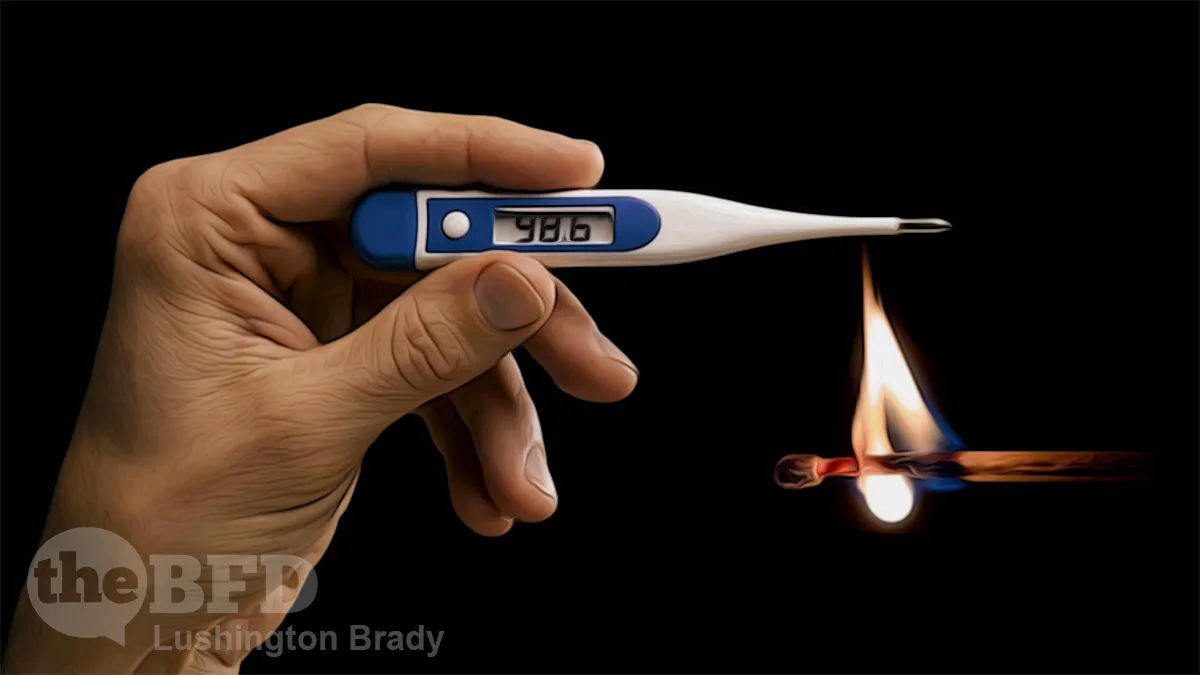Table of Contents
What, exactly, is Australia’s Bureau of Meteorology trying to hide? That the BOM is indeed trying to cover up something is the inescapable conclusion from its relentless secrecy and determined obfuscation. For three years, the BOM fought scientist Dr John Abbott tooth and nail over an FOI request to release temperature data.
The saga involved a request for daily maximum and minimum temperature measurements at several sites in Australia. The request was for parallel temperature data, where measurements were taken using older liquid-in-glass thermometers and more modern automated platinum resistance probes introduced in the past 30 years. It is important to know the measurements using these different types of equipment if reliable continuous records are to be constructed for each site so recent temperature changes can be accurately compared with records extending back to the start of the industrial era.
As I’ve written before, the biggest issue with historical temperature records is comparing apples and apples. Data collection methodologies, practises and instrumentation have changed continuously over the last few decades, let alone centuries. It doesn’t take much thought to see the issue with comparing modern, digital thermometers, or satellite-based laser systems with weather balloons and liquid mercury thermometers.
Especially when the whole climate alarm is predicated on fluctuations in the tenths of degrees.
Small differences in temperature measurement between the two types of equipment, perhaps 0.2C to 0.5C, are not negligible in the context of global warming when the public is told a rise of 1.5C above pre-industrial era will have dire consequences.
This is where the BOM’s data could be critical. The BOM keeps parallel data — that is, hand-read liquid thermometers and automated platinum resistance probes. Comparing the two sets of raw data, and the BOM’s “reconciliation” is essential for determining if the official record is valid. Just taking the BOM’s “trust us” isn’t how science is done. Remember: Nullius in Verba. “On the word of no one.”
This is what Abbott wanted to do. So, why wouldn’t the BOM let him?
One tactic used is to allege that the documents requested do not exist. They did exist, as they were referred to in BOM reports that list the sites at which parallel temperatures have been collected and the periods. The proof is that we have finally received parallel temperature for Brisbane, showing claims to the contrary were nonsense.
Another tactic is to erect cost barriers.
FOI legislation allows a fee waiver on grounds of public interest. The BOM rejected any claim of public interest.
It is astonishing that the BOM could take the position that accurate quantification of atmospheric temperature changes across the past century has little or no public interest when the public is told there will be drastic consequences for the planet if a 1.5C atmospheric temperature increase is exceeded.
The Australian
It got even worse when the BOM was forced, kicking and screaming, into releasing just a tiny fraction of the data it was trying so desperately to keep secret.
Only three years of the 15 years of data for Brisbane Airport was released to John Abbot on the Thursday before Easter and this is just a fraction of the 760 years of parallel data the bureau holds for 38 different locations spread across the landmass of Australia.
From there, the BOM descended even deeper into petty bastardry.
I’ve had several academics phone and email me over the last few days asking for assistance in locating the parallel data for Brisbane Airport online. I have explained that this was never provided to me in an electronic form, but as more than a thousand handwritten pages. I manually transcribed the handwritten entries over Easter and undertook preliminary analysis of this data.
It might be noted that just weeks ago, the taxpayer-funded broadcaster was defending the taxpayer-funded BOM.
Specifically, [the ABC] incorrectly claimed that the bureau makes all its temperature data publicly available on its website, including the parallel data.
As we see from Dr John Abbott’s brutal, Herculean effort to pull the data teeth from a struggling, kicking, biting BOM, that just isn’t true.
So, why are the BOM and ABC so determined to keep the Australians who pay for them in the dark?
My analysis of the three years of parallel temperature data from Brisbane Airport shows that 41 per cent of the time the probe is recording hotter than the mercury, and 26 per cent of the time cooler. The difference is statistically significant. The differences are not randomly distributed, for example, and there is a distinct discontinuity after December 2019.
The BOM tries to explain that away as a fault in the automatic weather station that was fixed in January 2020.
Yet even after January 2020, the probe was recording up to 0.7C warmer than the mercury thermometer at Brisbane Airport […] the difference between measurements from the probe and mercury can be up to 1.9C – this is how much the mercury recorded warmer than the probe on one occasion.
So, that’s more than the entire 20th-century warming.
The Bureau is also pulling a fast one when it claims it follows global standards.
The bureau is unique in the world in taking instantaneous readings from the probes and using the highest in any 24-hour period as the maximum temperature for that day.
In the US, one-second samples are numerically averaged over five minutes, with the highest average over a five minute period recorded as the daily maximum temperature.
This is to achieve some equivalence with traditional mercury thermometers that have a slower response time, more inertia.
In contrast, here in Australia, the bureau use the highest instantaneous spot readings as the maximum temperature for that day. So, depending on how the probe is calibrated, it can generate new record hot days for the same weather.
The Australian
And they want us to just take them on faith that they’re not hiding anything.








